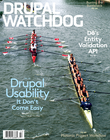 Last year, we had a crisis in our company. We had been imploring our landlord to give us more space, but a few months after he finally did, our office emptied out. Some days we had just one or two people showing up. Not only was it an epic waste of money, but the office felt empty – and the solitude was hurting morale.
Last year, we had a crisis in our company. We had been imploring our landlord to give us more space, but a few months after he finally did, our office emptied out. Some days we had just one or two people showing up. Not only was it an epic waste of money, but the office felt empty – and the solitude was hurting morale.
For almost six years, I have been working in a fairly unorthodox way. All of my company's employees are located in Szeged, Hungary, but I work from my home office in Belgium. When I tell people that I am a remote boss, one of the first things they ask is how often I travel to Hungary. They are puzzled when I tell them that I typically travel back to Hungary every three months or so. How can I lead the company when I’m not there? How do I make sure people do their jobs?
This was never really a problem. I started the company with my wife when we still lived in Hungary, and we were able to build a terrific enterprise with people we could trust. We also had the necessary tools in place to enable remote work. Between Skype, Google Docs, ticket management systems, and e-mail, we were able to run the business without any real issues. We had our office in Szeged, a great office manager who handled all the paperwork, and that was that.
But as I said, that changed abruptly last year, as soon as our office space expanded: several colleagues who had been with us for a long period left the company and, after a policy change that accommodated work from home, people started working remotely. Later, we merged with another Drupal agency that never had an office. As a result during the winter days, when snow was falling and the weather freezing, few people felt inclined to come in.
There were some weird aspects to this. Often the same people who complained about the empty office and low morale were also working more from their homes. Even if several people preferred working centrally, there were not enough colleagues at any given time for the office to reach critical mass.
Empty rooms combined with the loss of longtime staff members made it feel like the apocalypse was upon us. Some people even urged that we clamp down on remote working and go back to an office-centric situation. But by then, that would have been a really big hit for morale, so, after some scary moments, we decided to counter the loss of cohesion we felt by initiating a series of tribal moments:
- We instituted quarterly company meetups that our remote colleagues were required to attend.
- We created a weekly company standup, a one-hour call in which each employee could talk about their week, and management could share strategic announcements and news. (This is not scalable but at 25 employees it still works.)
- We started peer-to-peer one-on-ones in which, on a weekly basis, a remote employee could chat with a random office-based colleague, to strengthen bonds.
- We initiated a #coming-to-the-office-is-rewarding campaign that, in our weekly newsletter, highlighted something interesting or amusing about office life.
Today, I am happy we didn’t return to a centralized office. Our company is now stronger than ever; I think the option to work remotely has become an important part our lives. Giving our employees more freedom to choose makes us a better company to work for. I also believe that it has made our company more scalable.
Our transition is not yet final: in the end, we want to balance remote working with additional co-working places. After the summer, we will be opening a small office in Budapest where our colleagues can meet up to collaborate; we have plans to make it possible for people to sleep over when they attend a meetup there. In Belgium we are opening a similar facility, so that colleagues can join me for a retreat and buckle down for a sprint on a project. We would also like to open our office to freelancers.
I believe that most people are not built for a sedentary life. The ability to work in different places, with different people, is a great way to pull you out of your routine. And freedom from routine is crucial for inspiration and personal growth. My colleagues are like family to me; I am delighted to share that freedom with them.
These Are the Tools We Use:
- Slack is a messaging system that provides a channel for our projects and teams. It lets us combine asynchronous interactions with notifications from our collaboration tools.
- Google Docs enables us to work together on documents in real time or through a series of comments.
- Google Calendar allows us to schedule meetings with colleagues and overseas clients. (The time zone app in Google Calendar Labs is super-handy.)
- We use Jenkins for standardized automated deployments.
- Redmine lets us document requirements, track issues, and log the time we spend on them.
- Bitbucket is a code repository our developers can use to merge their efforts.
- We use Skype and Google Hangout for small meetings where we want video chat or screen sharing.
- Teamspeak is used for large meetings, like our weekly company calls.
Image: "Teliris VL Modula" by Fuelrefueld via Wikimedia Commons (Own work) is licensed under CC BY-SA 3.0
